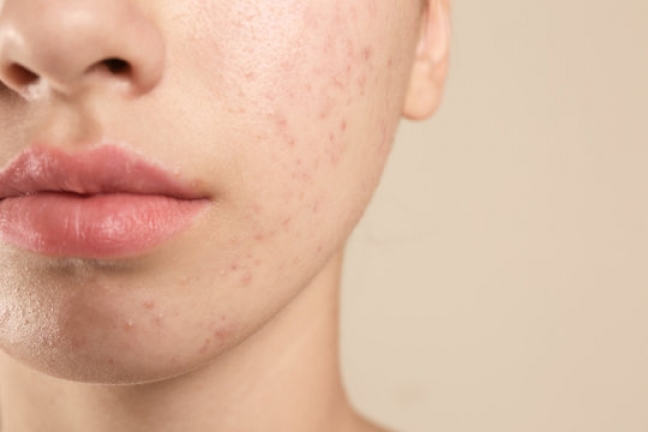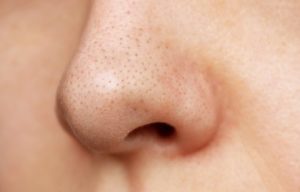What are Comedones?
Comedones, those little critters that can wreak havoc on the skin, can be quite frustrating and annoying to get rid of. So, where do they come from? Comedones are a common type of acne lesion that forms when hair follicles become clogged with oil, dead skin cells, and sometimes bacteria. They can appear as either blackheads or whiteheads, depending on whether the clogged pore is open or closed.
For those dealing with blackheads or whiteheads, these little culprits form when the hair follicles get clogged with oil, dead skin cells, and can be quite detrimental to the person’s confidence and self-esteem. They can be a constant source of frustration and annoyance, especially if they are persistent or severe. But, with the right knowledge and tools, one can say goodbye to them once and for all. It’s time to turn that frown upside down and embrace the journey towards clearer, healthier skin!
Types of Comedones
Comedones are a prevalent skin issue that can happen to anyone, leading to the appearance of small bumps on the skin. These bumps are caused by the accumulation of excess oil, dead skin cells, and sometimes bacteria that block hair follicles and can be found anywhere on the body.
There are two types of comedones:
- Open Comedones (Blackheads):
Open comedones, also known as blackheads, are formed when hair follicles become partially clogged with a mixture of excess oil and dead skin cells. The open pore then allows air to enter, leading to oxidation and giving the bump a black or dark appearance. These comedones are most commonly found on the face, particularly on the nose and chin, but they can also occur on the back, chest, and shoulders. It’s essential to manage open comedones properly to prevent them from developing into inflamed pimples
- Closed Comedones (Whiteheads):
Closed comedones, commonly known as whiteheads, occur when hair follicles become fully clogged with a mixture of excess oil and dead skin cells, not allowing air to enter. This results in a small white or flesh-colored bump on the skin. They are usually found on the face, often on the cheeks and forehead, but can also appear on the back and chest. Closed comedones are known to be more stubborn and harder to manage than open comedones, and they can often lead to inflamed comedonal acne.
Understanding the differences between open and closed comedones is important in determining the appropriate treatment plan.
What causes Comedonal Acne?
Comedonal acne is caused by various factors that lead to the clogging of hair follicles. The following are some of the primary causes:
- Excess oil production: The sebaceous glands in the skin produce sebum or oil, which, when mixed with dead skin cells, can block pores and cause comedones to form.
- Hormonal changes: Hormonal fluctuations during puberty, pregnancy, and menstruation can increase sebum production, leading to the formation of comedones.
- Genetics: Some individuals may have a genetic predisposition to developing comedonal acne due to the structure of their hair follicles or skin.
- Cosmetics and skincare products: Certain ingredients in cosmetics and skincare products that contain comedogenic ingredients, can cause skin inflammation and clog pores, contributing to the formation of Apart from that, using heaving moisturizers or serums that are not suitable for your skin type can also lead to the formation of comedonal acne.
- Environmental factors: Exposure to pollution, humidity, and sweat can also contribute to the development of comedonal acne by blocking pores and increasing sebum production.
- Lifestyle choices: Certain lifestyle choices such as smoking, drinking and dietary patterns can also cause the formation of comedonal acne.
What is the treatment for Comedonal Acne?
If you are struggling with comedonal acne, it’s important to seek out effective treatment options. Fortunately, there are several approaches you can take to manage and improve this condition, including:
- Chemical peels: Chemical peels can be a powerful tool in the treatment of comedonal acne. These chemical peels typically contain alpha-hydroxy acids (AHAs) or beta-hydroxy acids (BHAs), which help to exfoliate the skin and unclog pores. When used regularly, chemical peels can help to reduce the appearance of comedones and prevent future breakouts.
- Topical retinoids: Topical retinoids are a type of medication that can be applied directly to the skin to help unclog pores and reduce the formation of comedones. These medications can also help to improve the texture and appearance of the skin over time. Some common topical retinoids include tretinoin, adapalene, and tazarotene.
- Salicylic acid: Salicylic acid is another ingredient that can be helpful in the treatment of comedonal acne. This beta-hydroxy acid works by exfoliating the skin and reducing inflammation, which can help to unclog pores and prevent breakouts. Salicylic acid is often found in over-the-counter acne treatments, such as cleansers, toners, and spot treatments.
- Benzoyl peroxide: Benzoyl peroxide is another common ingredient in acne treatments that can be effective in the treatment of comedonal acne. This medication works by killing the bacteria that contribute to skin lesions and acne, and reducing inflammation in the skin. Benzoyl peroxide can be found in a variety of strengths, from over-the-counter treatments to prescription-strength gels and creams.
- Skin care routine: Developing a consistent and effective skin care routine can also be beneficial in the management of comedonal acne. This may include the use of gentle cleansers, exfoliants, and moisturizers that are specifically designed to target acne-prone skin. It’s important to avoid harsh or abrasive products that can irritate the skin and make the condition worse
- Oral medications: In some cases, oral medications may be necessary to manage severe or persistent cases of comedonal acne. These medications may include antibiotics, hormonal therapies, or isotretinoin, a powerful medication that can be used to treat severe cases of acne. It’s important to discuss the potential risks and benefits of these medications with a dermatologist before starting treatment.
- Consult a dermatologist: A dermatologist can perform a procedure called comedone extraction to manually remove comedones from the skin. Extraction involves the use of a special tool for removing plugs of the dead skin cells and oil from clogged pores. With the use of a special tool, a dermatologist can gently extract the comedones without damaging the surrounding skin.
In a Nutshell
Managing and treating comedonal acne can be a challenging and frustrating process, but with the right approach and guidance, it is possible to improve the health of your skin. By incorporating the tips and recommendations such as chemical peels, a proper skin care routine, comedone extraction, and the use of topical and oral medications, you can take control of your acne and prevent future breakouts.
If you’ve been dealing with persistent or severe comedonal acne that are not improving even after the use of suggested treatments it’s crucial to seek the guidance of a dermatologist who can provide a more personalized approach to treating your skin’s type and needs. A dermatologist can help you identify the underlying causes of your acne, such as hormonal imbalances or lifestyle factors, and recommend customized treatment options that may include topical or oral medications, chemical peels, comedone extraction, or in-office procedures like laser therapy.
Don’t let acne hold you back any longer from feeling confident and comfortable in your own skin. Take the next step towards clear and healthy skin by visiting the Skin and Hair Academy’s find local dermatologist page. With a simple click, you can locate a dermatologist near you who can help you achieve the clear and healthy skin you deserve!
FAQs on Comedonal Acne
1) Which skin type is prone to comedones?
Comedonal acne can affect any skin type, but it is most commonly seen in people with oily or combination skin. This is because excess oil production can clog pores and lead to the formation of comedones. Apart from that, comedonal acne can also be caused by various factors such as skincare products, hormones and weather.
2) Should I pop my comedonal acne?
No, it is not recommended to pop or pick at comedonal acne as this can lead to inflammation, infection or even scarring. It is best to leave the acne alone and use appropriate treatment methods such as chemical peels, topical medications or comedone extraction that is performed by a licensed dermatologist.
3) Does vitamin C reduce comedones?
While vitamin C has many benefits for the skin, it is not typically used as a treatment for comedonal acne. To reduce comedones you can instead use topical treatments such as retinoids, salicylic acid, or benzoyl peroxide. If the acne still persists it’s best to get it checked by a dermatologist.
4) What products help get rid of closed comedones?
Products that contain active ingredients such as salicylic acid, retinoids, or benzoyl peroxide can help to reduce the appearance of closed comedones. Along with using a gentle cleanser and moisturizer can help to prevent further clogging of the pores.
5) Which serum is good for comedones?
Using serums that contain active ingredients such as retinoids, niacinamide, or alpha-hydroxy acids (AHAs) can help in treating comedonal acne. It is important to consult with a dermatologist to determine the best treatment plan for your specific skin type and needs.
















